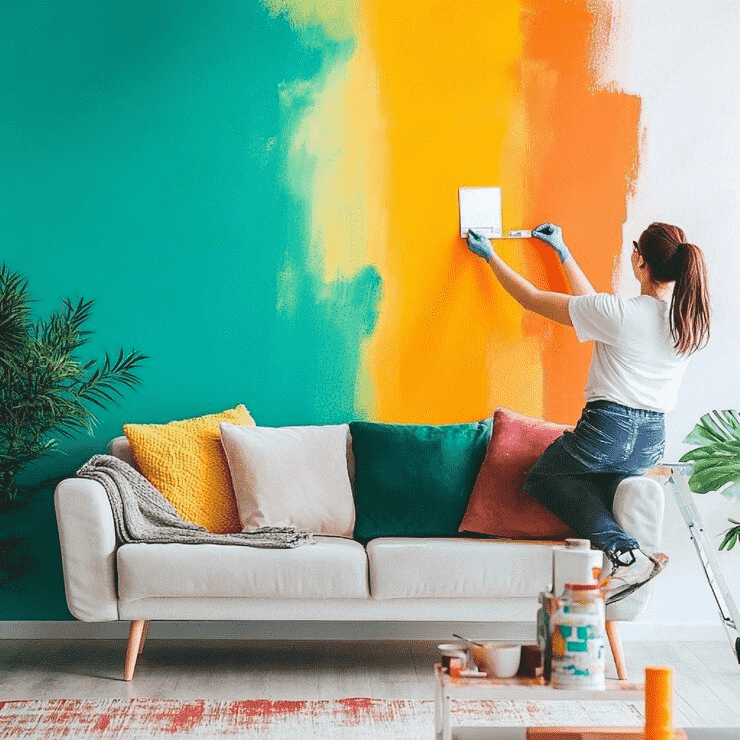Introduction to Applying Texture Paint
Texture paint represents an innovative approach to enhancing both interior and exterior surfaces, offering a distinct alternative to traditional paint options. This specialized form of paint is designed not just for color application but to create appealing, tactile finishes that add depth and visual interest to a variety of surfaces. By incorporating texture paint into design schemes, homeowners and designers alike can achieve effects that evoke a sense of richness and sophistication, making spaces far more engaging.
There are numerous benefits associated with the use of texture paint. Primarily, it can drastically transform the appearance of a room or building face, turning an uninspired area into a striking focal point. The unique finishes offered by texture paint, including styles that mimic stone, stucco, or even fabric, provide the advantage of customization, allowing individuals to reflect personal tastes and complement overall design aesthetics. Furthermore, texture paint often helps to conceal imperfections in walls or surfaces, making it an advantageous option for those seeking to refresh outdated areas without a complete overhaul.
Versatility is another remarkable attribute of texture paint, as it can be applied to various surfaces, ranging from walls to ceilings, and even outdoor structures like fences and pergolas. Its adaptability makes it suitable for an array of design styles, from rustic and traditional to modern and minimalist. Thus, whether it is used to create a cozy atmosphere in a living room or to add character to a patio, texture paint can effectively meet diverse design needs. Given its ability to elevate the visual appeal of spaces, texture paint emerges as a compelling choice for those looking to enhance the aesthetic quality of their environments.
Understanding Mithila Paints
Mithila Paints is an innovative brand distinguished by its rich heritage and exceptional craftsmanship in the realm of texture paints. Originating from the culturally vibrant Mithila region of India, the brand draws inspiration from traditional art forms while seamlessly integrating modern techniques. This fusion results in a unique product line that not only showcases artistic aesthetics but also prioritizes high performance and functionality.
The ethos of Mithila Paints revolves around a commitment to quality and sustainability. Each product is crafted using eco-friendly materials, ensuring that they are safe for both the environment and the consumers who use them. This dedication to sustainability is increasingly relevant in today’s market, as consumers seek out products that do not compromise ecological integrity. Mithila Paints’ texture paints are designed to withstand the rigors of time, providing long-lasting durability alongside their artistic flair.
One of the standout features of Mithila texture paints is the vibrant range of color options available. These paints are meticulously formulated to enhance the beauty of any space, allowing for creative expressions on walls and other surfaces. The brand emphasizes ease of application, making it accessible for both professional painters and DIY enthusiasts alike. The textures achieved through Mithila Paints can transform ordinary spaces into visually captivating environments, reflecting personal style and aesthetic tastes.
Overall, Mithila Paints successfully bridges traditional artistry and modern requirements in texture paint products. Its unwavering focus on quality, sustainability, and a diverse color palette positions it as a leader in the paint industry, making it a desirable choice for consumers seeking both beauty and functionality in their painting projects.

Gathering the Necessary Tools and Materials
To ensure a seamless and effective application of texture paint, it is essential to gather an array of necessary tools and materials. The selection of these items plays a crucial role in determining the outcome of your textured surfaces. A solid plan starts with the right tools, which include brushes, rollers, spatulas, drop cloths, painter’s tape, and safety equipment.
Brushes and rollers are fundamental in texture painting; they help achieve varied effects based on the technique used. A high-quality brush is ideal for applying paint in tight corners or intricate edges, while rollers can cover larger areas quickly and efficiently. Spatulas are particularly useful for creating specific texture patterns, offering the ability to manipulate the paint’s surface effectively.
Drop cloths are vital in protecting your floors and furniture from any accidental drips or spills. Opt for absorbent canvas or disposable plastic sheets, depending on your project’s scale. Additionally, painter’s tape is indispensable for ensuring clean lines and sharp edges, especially when applying textures around molding or different surfaces.
Safety equipment should not be overlooked during this process. Protective eyewear, masks, and gloves are crucial to safeguard against paint fumes and skin irritation. Selecting a suitable type of texture paint finish also significantly impacts the final appearance of your project. Matte finishes offer a subtle, understated elegance, while glossy finishes provide a more vibrant, striking look.
Lastly, consider the environmental condition of your workspace. Adequate ventilation is necessary to ensure your painting session is safe and comfortable. By carefully choosing your tools, materials, and finishing options, you will set yourself up for a successful texture painting experience with Mithila Paints.

Preparing the Surface for Texture Painting
Proper surface preparation is a critical prerequisite for achieving successful texture painting results. The process begins with a thorough cleaning of the surface to remove dust, grease, and any contaminants that could compromise adhesion. Using mild detergents and water, the surface should be scrubbed gently, ensuring that it is entirely free from residue. Allow adequate time for the surface to dry completely before proceeding to the next steps, as moisture can hinder the painting application.
Once the surface is clean and dry, the next step involves inspecting for any blemishes, such as cracks, holes, or uneven areas. It is essential to repair these imperfections to ensure a smooth and stable base for the texture paint. Utilizing appropriate fillers or spackling compounds can help to seal these imperfections, creating an even surface. After applying the filler, a sanding process should follow to achieve a uniform texture across the surface. This meticulous approach not only prepares the surface but significantly enhances the overall finish of the texture paint.
Additionally, ensure that the surface is stable and sound. Any flaking paint, loose materials, or peeling surfaces need to be removed, as they can lead to poor adhesion of the texture paint. Failing to address these issues often results in unsatisfactory finishes, which can undermine the aesthetic appeal of the final artwork. Therefore, diligence in surface preparation cannot be overstated. Once the surface is adequately prepared, this will facilitate the application of Mithila paints, allowing the texture to adhere effectively, ultimately contributing to a more durable and visually pleasing outcome. It is through this meticulous preparation that the integrity and beauty of the texture paint are preserved in the long run.

Applying Texture Paint: Techniques and Tips
Applying texture paint effectively can dramatically enhance the aesthetic appeal of any surface. Leveraging Mithila Paints products, various techniques can be employed to achieve the desired textured finish. Among the most popular methods are sponging, rolling, and brushing. Each technique offers distinct advantages and can create a variety of looks suitable for different spaces.
Sponging involves the use of a natural sponge to apply paint in a dabbing motion. To begin, prepare the wall by cleaning it thoroughly and ensuring any previous layers of paint are intact. Once prepped, select two contrasting colors of Mithila texture paint. Dip the sponge into the first color and gently dab it onto the wall, focusing on random areas for an organic look. After allowing this first layer to dry, repeat the process using the second color to build depth and dimension. This technique can create dynamic and fluid patterns that enhance the overall design.
Using a roller is another effective method for texture application. Choose a roller with the desired texture depth. Start by priming the wall to ensure proper adhesion. Once the primer has dried, pour the chosen Mithila Paint into a tray. Dip the roller into the paint, rolling off any excess before applying to the wall using an up-and-down motion. For added texture, consider rolling over certain areas multiple times or using different pressures. This technique often results in a uniform finish and is well-suited for larger surfaces.
Brushing is a more traditional method to apply texture paint, which allows for intricate detailing. Using a wide brush, apply the paint in strokes, swirling the brush to create movement and irregularity. Mixing colors, while brushing, can also add unique flair to your work. Regardless of the technique, achieving a consistent texture requires patience and practice. Avoid common pitfalls such as overloading the brush or sponge with paint, which can lead to drips and uneven surfaces.
In conclusion, whether you choose sponging, rolling, or brushing techniques, the key to successfully applying texture paint is practice and careful attention to detail. Utilizing Mithila Paints, these methods can produce stunning results that elevate any space. The right application not only enhances visual interest but also contributes to a harmonious environment.
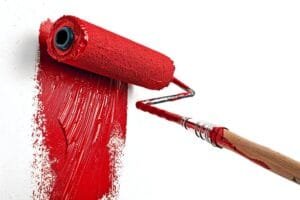
Finishing Touches: Sealants and Clean-Up
After applying texture paint, the use of sealants is essential for protecting the surface and prolonging its lifespan. Sealants act as a barrier against environmental factors such as moisture, dirt, and UV rays, which can degrade the paint over time. By choosing a high-quality sealant designed specifically for texture paint, one can enhance the durability and overall appearance of the painted area. It is advisable to apply the sealant at least 24 hours after the texture paint has dried completely to ensure optimal adhesion. During application, ensure that the area is well-ventilated and free from dust to achieve the best results.
The application process for sealants typically involves using a clean brush or spray to ensure an even coating. A thorough inspection of the surface beforehand is advisable to identify any imperfections that need to be addressed before sealing. Once the sealant has been applied, allow it to cure as per the manufacturer’s recommendations, as this period is crucial for achieving maximum protection.
Equally important is the clean-up process after painting. Proper care of tools such as brushes, rollers, and trays is essential for maintaining their longevity and effectiveness. Immediately after use, it is recommended to rinse the tools with water or the appropriate solvent, depending on the type of paint used. This not only prevents the paint from drying on the tools but also ensures they remain in good condition for future projects.
When it comes to disposing of paint waste, it is vital to do so responsibly. Leftover paint should never be simply thrown away. Instead, consult local regulations regarding paint disposal, as many communities have designated hazardous waste facilities for this purpose. By following these guidelines, the integrity of the environment is upheld while also ensuring a successful painting experience with Mithila Paints.
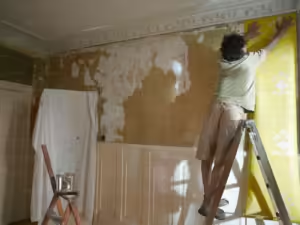
Common Mistakes to Avoid When Applying Texture Paint
Texture paint can enrich surfaces and enhance the aesthetic appeal of any room, but using it incorrectly can lead to unsatisfactory results. One of the most frequent mistakes is rushing the application process. Impatience can lead to uneven textures, visible brush strokes, or inconsistent color distribution. It is crucial to allocate adequate time for each layer of texture paint to dry completely before adding subsequent coats. This ensures a uniform and well-defined appearance that does justice to the art of texture painting.
Another common error pertains to incorrect mixing ratios of the texture paint. Many individuals either underestimate or overestimate the amount of water or additives that should be incorporated into the mixture. This usually results in poor adhesion or an undesired consistency that does not achieve the intended texture effect. It is advisable to thoroughly read the manufacturer’s instructions regarding mixing ratios and to follow them meticulously. Experimentation on a small scale can also yield better outcomes, allowing users to adjust the mix according to the specific surface being treated.
Moreover, quite a few individuals neglect the importance of testing the texture paint on a small area before committing to a full application. Failing to perform this preliminary test can result in unexpected unforeseen outcomes. Subtle variations in texture or color may not become apparent until the paint is applied to the entirety of the chosen surface, leading to potential dissatisfaction. By taking the time to test a small patch, one can avoid costly mistakes and ascertain the desired effect, ensuring the final outcome aligns with their vision.
By being mindful of these common pitfalls—rushing the job, incorrect mixing, and skipping test patches—individuals can enhance their experience with texture paint application. This strategic approach not only fosters better results but also cultivates a more enjoyable and fulfilling painting experience.
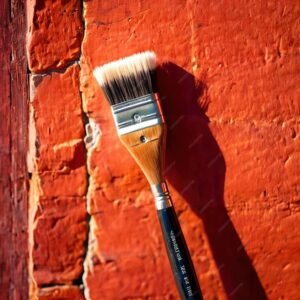
Creative Ideas for Using Texture Paint
Texture paint offers a unique way to enhance the aesthetic appeal of any space. With its versatility, it can be incorporated into various design elements around the home. One of the most popular applications is creating feature walls. By selecting a single wall and applying a vibrant layer of Mithila texture paint, you can draw attention and create a striking focal point within a room. Choose colors and patterns that echo your style, whether they are bold geometric shapes or more organic designs that seamlessly blend with the existing decor.
Another inspiring application of texture paint is in ceiling design. Often overlooked, ceilings can represent an untapped canvas for creativity. Using Mithila texture paints, you can apply intricate patterns or high-contrast colors that infuse the room with character and flair. Textured ceilings can be particularly captivating in dining rooms or living areas, providing a luxurious ambiance when layered with appropriate lighting.
Outdoor projects offer another exciting opportunity to utilize texture paints. Patios, garden walls, and even fencing can be transformed with the durable and weather-resistant qualities of Mithila texture paints. Opt for designs inspired by nature, such as floral motifs or earthy tones, to harmonize with your garden landscape, adding depth and interest to your outdoor spaces.
Lastly, furniture upcycling using texture paint can not only restore but also reinvigorate old pieces. Applying Mithila texture paints to wooden furniture, cabinets, or shelves can breathe new life into these items. Experiment with layering techniques or distressed finishes to create a rustic or contemporary look that pairs perfectly with your interior design style.
Incorporating texture paint into your design projects fosters both creativity and personalization, allowing you to craft spaces that reflect your individuality.
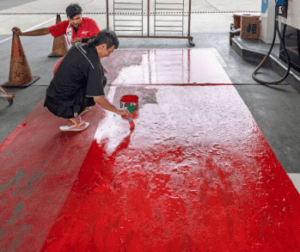
Conclusion and Final Thoughts
Throughout this guide, we have thoroughly explored the art of applying texture paint using Mithila Paints, highlighting its value in enhancing home decors. Texture paint not only adds depth and character to a wall but also transforms a simple space into a visually captivating environment. By leveraging the rich cultural heritage behind Mithila Paints, homeowners can incorporate unique designs and vibrant colors that reflect their personal style. This creative technique offers the opportunity to express individualism while making a statement in any room.
One of the key benefits of embracing texture painting is its ability to conceal imperfections on walls, providing a canvas that invites creativity without the pressure of achieving a flawless surface. The tactile nature of texture paint creates an engaging aesthetic that can resonate with guests and family alike. Utilizing Mithila Paints also supports artisan craftsmanship, fostering a connection with traditional art forms that have been passed down through generations.
As you consider embarking on your texture painting journey, remember that the process itself can be immensely rewarding. Experimenting with different techniques and patterns can yield stunning results, allowing you to tailor your space exactly to your liking. We encourage you to cultivate your creativity and confidence. Don’t shy away from mixing colors or incorporating intricate designs; after all, your home reflects your personality and taste.
We invite you to share your experiences in texture painting with Mithila Paints or pose any questions you may have. Your insights and inquiries contribute to a community of fellow enthusiasts, eager to learn and grow together in this fascinating world of decorative painting. With the right mindset and approach, your adventure with texture paint can lead to inspiring results that elevate your home’s ambiance, leaving a lasting impression.


